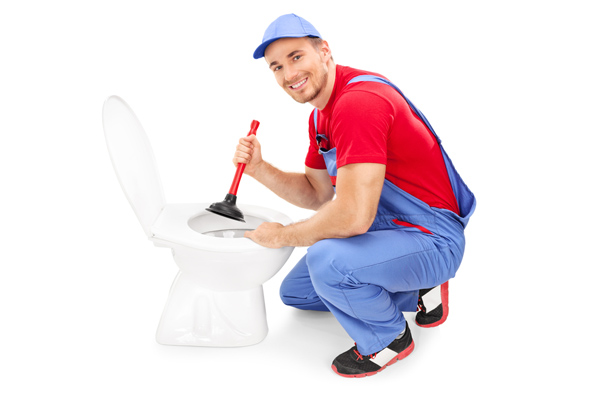Are you looking for know-how about How to Unclog Your Sink with a Plunger?

Introduction
Correct maintenance of house drains is vital for protecting against clogs and making sure smooth water circulation. One of the key tools in every house owner's toolkit is the bettor, alongside various drain cleaners developed to deal with persistent blockages effectively. This short article checks out exactly how to utilize plungers and drain cleaners effectively to maintain your drains pipes moving easily.
Section 1: Comprehending Plungers
Types of Plungers
There are numerous sorts of plungers available, each designed for various kinds of drains and obstructs. One of the most common kinds include mug bettors, flange plungers, and accordion bettors.
How Plungers Job
Bettors deal with the principle of creating stress and suction to displace obstructions. When appropriately used over a drainpipe, they produce a vacuum cleaner that can take out debris or break up obstructions.
Selecting the Right Plunger
Selecting the right plunger relies on the sort of drainpipe and the nature of the blockage. Cup plungers are ideal for sinks and bathtubs, while flange bettors are better suited for commodes as a result of their design.
Usual Errors with Plungers
Staying clear of these blunders guarantees effective plunging: inappropriate seal around the drain, insufficient pressure, and not clearing bordering particles.
Area 2: Making Use Of Plungers Effectively
Preparation
Before diving, make sure the plunger covers the drainpipe totally and develops a limited seal. Clear any kind of noticeable particles around the drainpipe opening.
Strategy
Beginning with mild diving movements to construct suction. Boost stress progressively, making use of a consistent rhythm. Repeat as required up until the drain clears.
Troubleshooting Tips
If plunging does not function, attempt changing the seal, using petroleum jelly for a better seal, or using a various sort of plunger.
Section 3: Understanding Drainpipe Cleansers
Types of Drainpipe Cleansers
Drain cleansers can be chemical or enzymatic. Chemical cleansers utilize solid chemicals to dissolve clogs, while chemical cleaners utilize natural enzymes to break down raw material.
How Drainpipe Cleaners Work
Chemical cleansers react with blockages to dissolve them, while enzymatic cleansers break down organic materials like hair and oil without harming pipes.
Safety and security Considerations
Always use handwear covers and eye protection when utilizing chemical drainpipe cleansers. Ensure adequate air flow and comply with maker guidelines meticulously.
Eco-Friendly Alternatives
Consider making use of vinegar and cooking soda or enzyme-based cleaners for environment-friendly options that are more secure for pipes and the atmosphere.
Area 4: Using Drain Cleaning Company Efficiently
Application Methods
Put chemical cleaners directly right into the drainpipe opening. Allow them to work for the suggested time prior to purging with warm water. Enzymatic cleaners ought to sit over night.
Preventative measures
Stay clear of blending different types of cleaners, as this can produce harmful fumes. Never utilize chemical cleaners together with a plunger, as splashing can happen.
Dealing With Stubborn Clogs
For persistent clogs, take into consideration utilizing a plumbing snake or calling an expert plumbing professional to avoid damage to pipes.
Conclusion
In conclusion, recognizing exactly how to use bettors and drainpipe cleansers successfully is crucial for maintaining healthy and balanced plumbing systems. By picking the right devices and techniques, homeowners can take on minor clogs and protect against major pipes issues down the line.
How to Use a Plunger to Unclog a Drain
The humble plunger is a simple yet effective tool for breaking clogs in sinks, tubs and toilets. This handy tool is easy to use. You can make the most of its power if you understand how it works. Ready to dive in? Here’s what you need to know.
Safety First!
Never use a plunger with drain chemicals. Water will splash as you work, and the chemicals can spatter, burning skin and eyes. It’s a good idea to use rubber gloves and wear safety goggles when you work on a clog.
Choose the Right Tool for the Job
Plungers come in two different styles. Sinks, bathtubs and showers require a cup plunger. Like its name suggests, the rubber end is shaped like a cup. Use a flange plunger on toilets. These plungers have a rubber funnel extending from the cup. A plunger needs to be big enough to cover the drain.
Ready, Set, Plunge!
- Coat the rim: Coat the plunger rim with petroleum jelly. This helps make a better seal.
- Block outlets: Hold a wet rag over nearby outlets such as the overflow vent or the drain in a second sink.
- Release air: Insert the plunger at an angle into the water. Water will displace air in the cup. A water-filled cup is more forceful than one filled with air.
- Keep the plunger upright: Hold the plunger perpendicular to the drain. Use fast, forceful strokes, but make the first stroke gentle. The first stroke can create a splash if the cup still contains air. Thrust the plunger 15 to 20 times.
- Snap off the plunger: The final stroke should be a strong upward motion that ends when the plunger snaps off the drain.
- Repeat the process: you may need to repeat this sequence several times. When the water drains away, your work is done. High-five!
https://plumbernw.com/blog/how-to-use-a-plunger-to-unclog-a-drain/
I'm very fascinated with Tips on How to Effectively Use a Plunger and I am assuming you appreciated our blog post. Sharing is good. Helping people is fun. Thanks a bunch for your time. Come back soon.
Or Book Technician Here
Comments on “Master Plungers and Drain Cleaners: Effective Approaches”